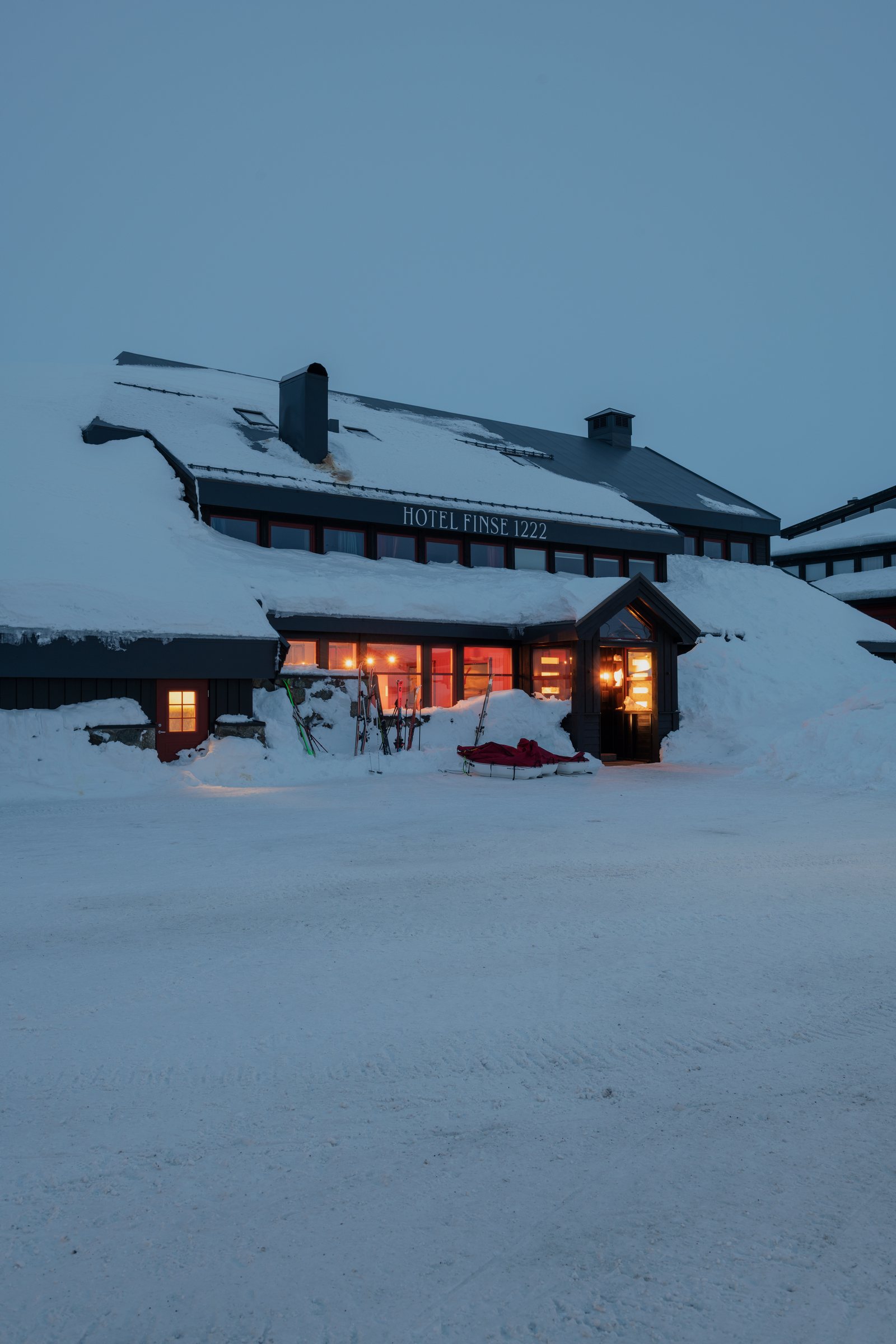At the very highest point of the Hotel Finse 1222Norwegian Railway track and only accessible by train, you will find the mountain village Finse. Known for its extraordinary mountain landscapes, expedition training, and by some, as the location of filming “Star Wars: Episode V The Empire Strikes Back in 1979”, Finse is also home to a stately hotel dubbed Hotel Finse 1222. First built as a mountain lodge in 1906, the building offered shelter for railroad builders, then it reopened as a hotel in 1909. In 2020, Snøhetta was commissioned to bring the hotel into the future, while maintaining its rich history and local traditions.
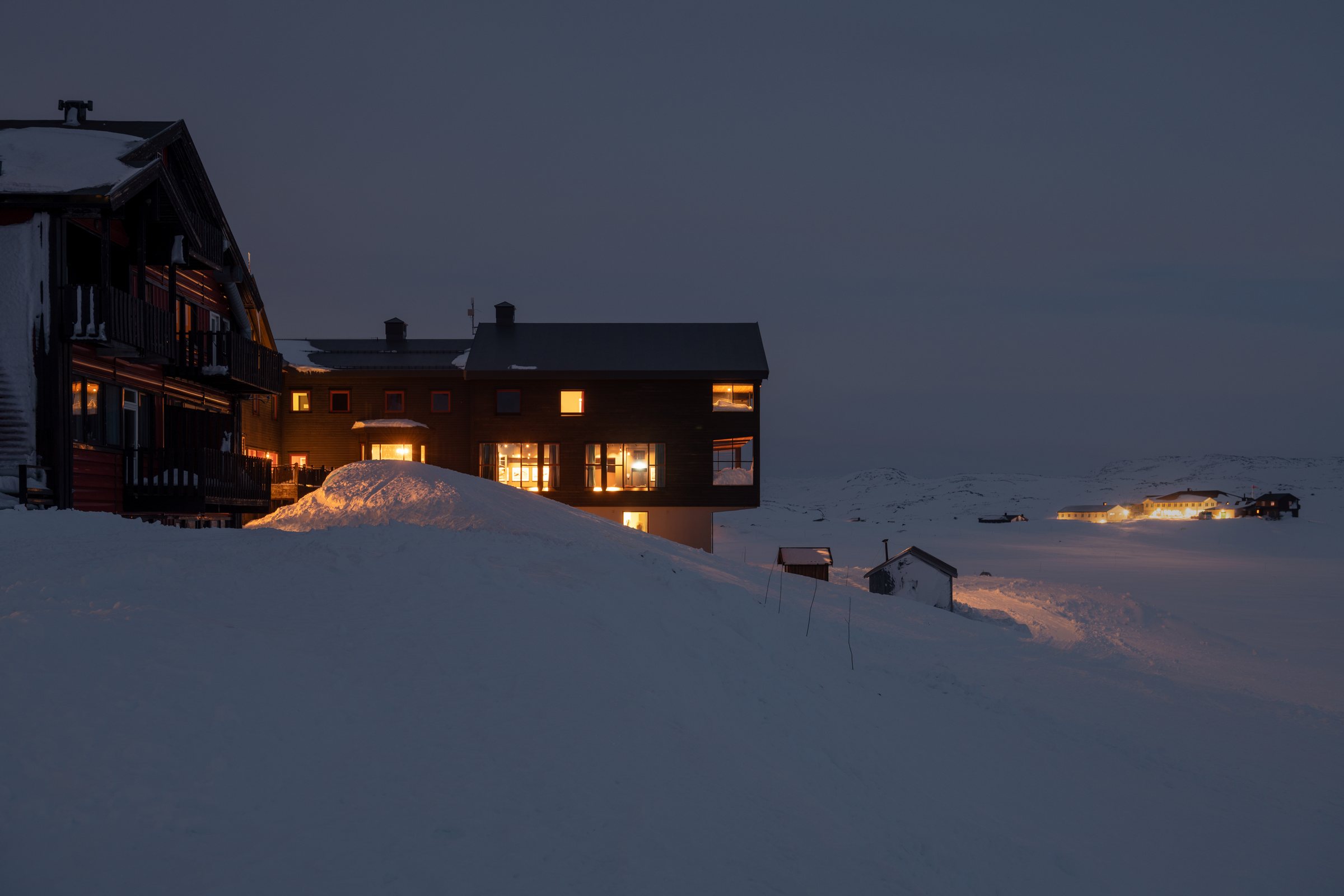
An eclectic and historically rich interior
With the goal of bridging the past and present Finse, the Snøhetta team started with diving into the vast historic material on site, and discoveries included both exclusive design classics in the attic and plenty of photographic material telling stories about both activities, design and interiors on site. Today, the hotel exudes a down to earth yet exclusive feel, and welcomes an increasing number of visitors wanting to explore both the outdoors and indoors.
With classical Swiss chalet-style exteriors, the hotel interiors, on the other hand, mix luxurious British design with classic Norwegian design. This eclectic fusion is continued in Snøhetta’s work, and the new interiors are characterized by Nordic-style wooden furniture, colorful surfaces, and elegant details.
Actively aiming to conserve and reuse as much as possible of existing materials and furniture was a key element in this project. From the old wooden floors beneath the carpet to furniture classics, senior architect Heidi Pettersvold Nygaard had a clear mission:
“We wanted to ensure we preserved the historical qualities of the place by attentively adjusting and upgrading the existing building mass, only adding new elements where it was absolutely needed. Bringing back to life the long and diverse history of Finse’s heydays was a delight, ensuring that also new visitors could become aware of this completely unique nature and hotel experience.”
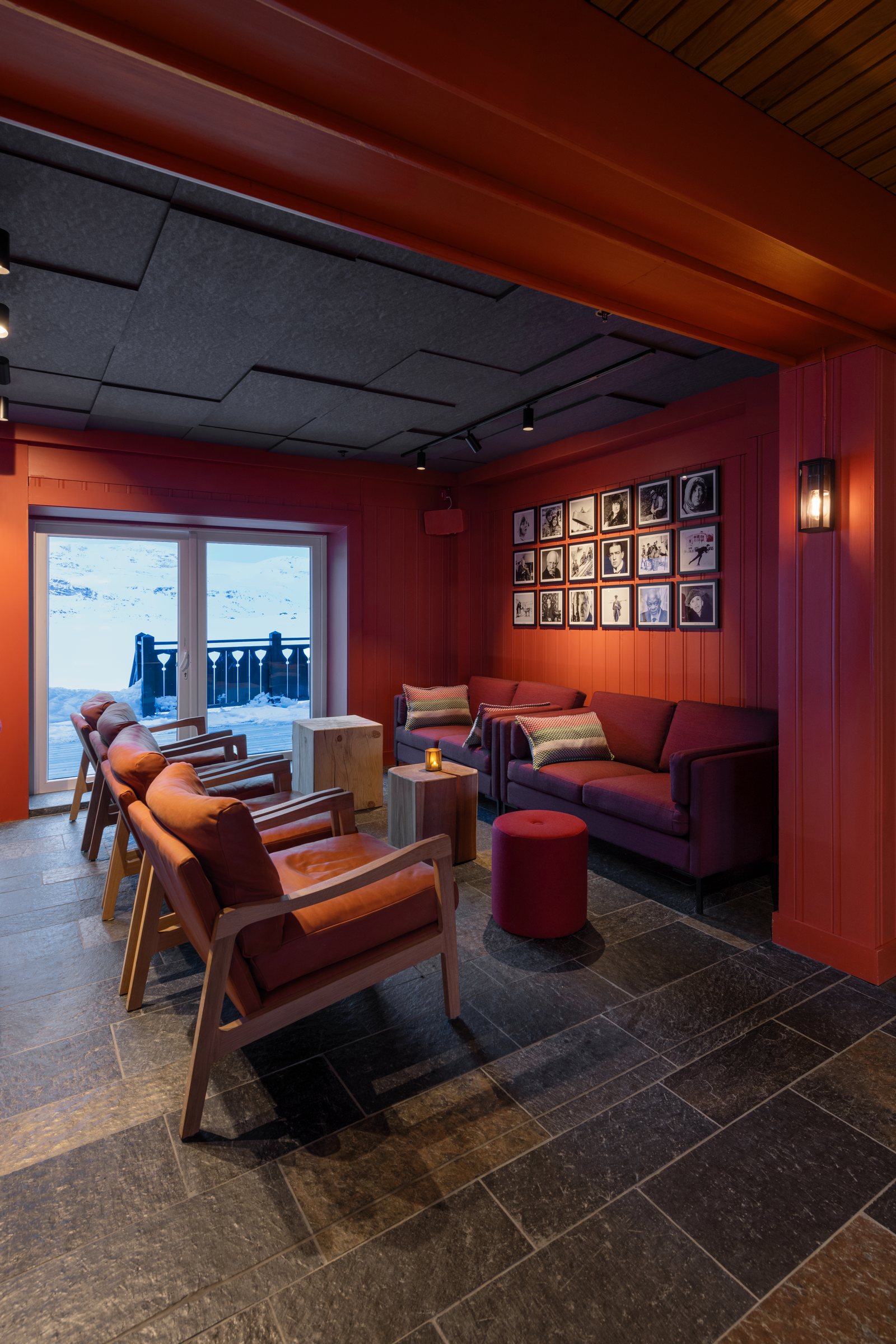
Connecting with nature
The defining element of the interior of the hotel is in fact the outdoors and the majestic, surrounding nature. Only accessible by train on the 371-kilometer-long Bergen Line, Finse’s unparalleled nature attracts hikers, skiers, and explorers, as well as those who simply come to enjoy a relaxing weekend. Although different, the visitors all have in common the search for connection with nature. Large panorama windows throughout the hotel open the space up to nature, inviting it in. Finse 1222 is located opposite one of Norway’s few glaciers, Hardangerjøkulen, and the interiors’ color palette and design wrap the glacier view in decorous framing.
One of the most spectacular attractions at Finse is the winter sunset turning everything blue. “Blåsalen”, the “blue room”, is designed for maximizing this experience. The fact that spectators regularly follow the changing light and colors minute by minute on these afternoons, confirms that it is a truly magical experience.
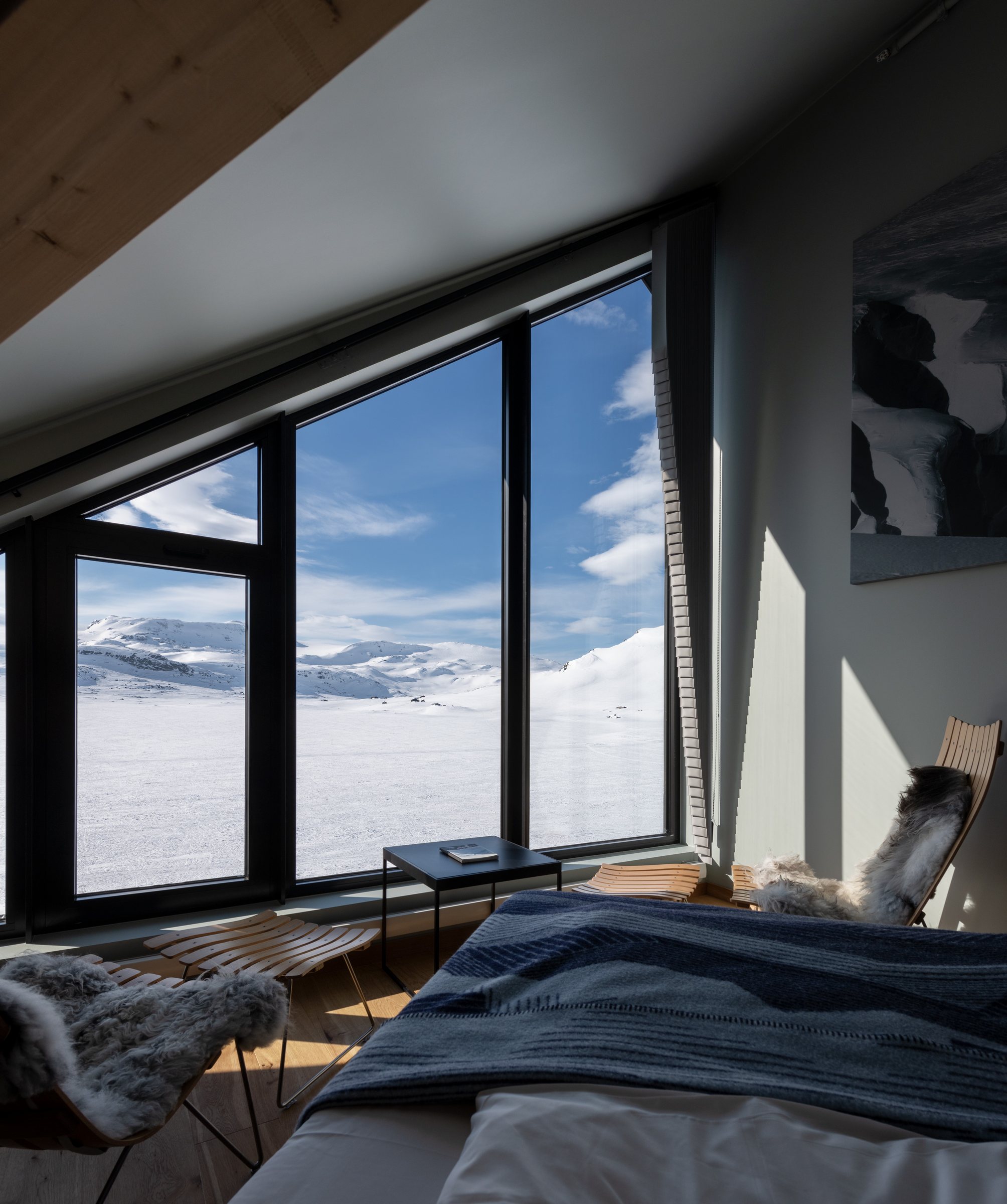
A warm welcome
Arriving at the hotel is only possible by train, with four arrivals per day during the winter season, which adds to the exclusive feel of something unique and extraordinary. A key element in renovating was also the arrival experience, including how the hotel entrance appears toward arriving visitors on the train tracks five meters away. Ensuring a more inviting and welcoming vibe, catered for taking in the views already from the entrance was important for the design team in the creation process. The new reception and lounge area is redesigned with a warm and hearty feel, with bright red and orange color palette, a fireplace, and ample space to sit down, relax and take in the views.
From the lounge, the team also extended the room, adding a broad terrace as a prolongment to the main building, with a design resembling original carpentry on site. With the new seating area, guests and passers-by are invited to enjoy a spot in the sun, watching both Finsevann and Hardangerjøkelen, or for concerts traditionally held in the summer.
The walls display memories from prominent visitors throughout the long history of the distinguished hotel. From the Prince of Wales, Norwegian figure skater Sonia Hennie, Hulda and Arne Garborg, and several famous explorers training for their next expedition have spent time at the hotel. Sir Ernest Shackleton called Finse an “ideal South Pole landscape”, a description that both the nature, climate, history and the people of Finse live up to – and the stories retold by regulars on-site, are quite a treat.
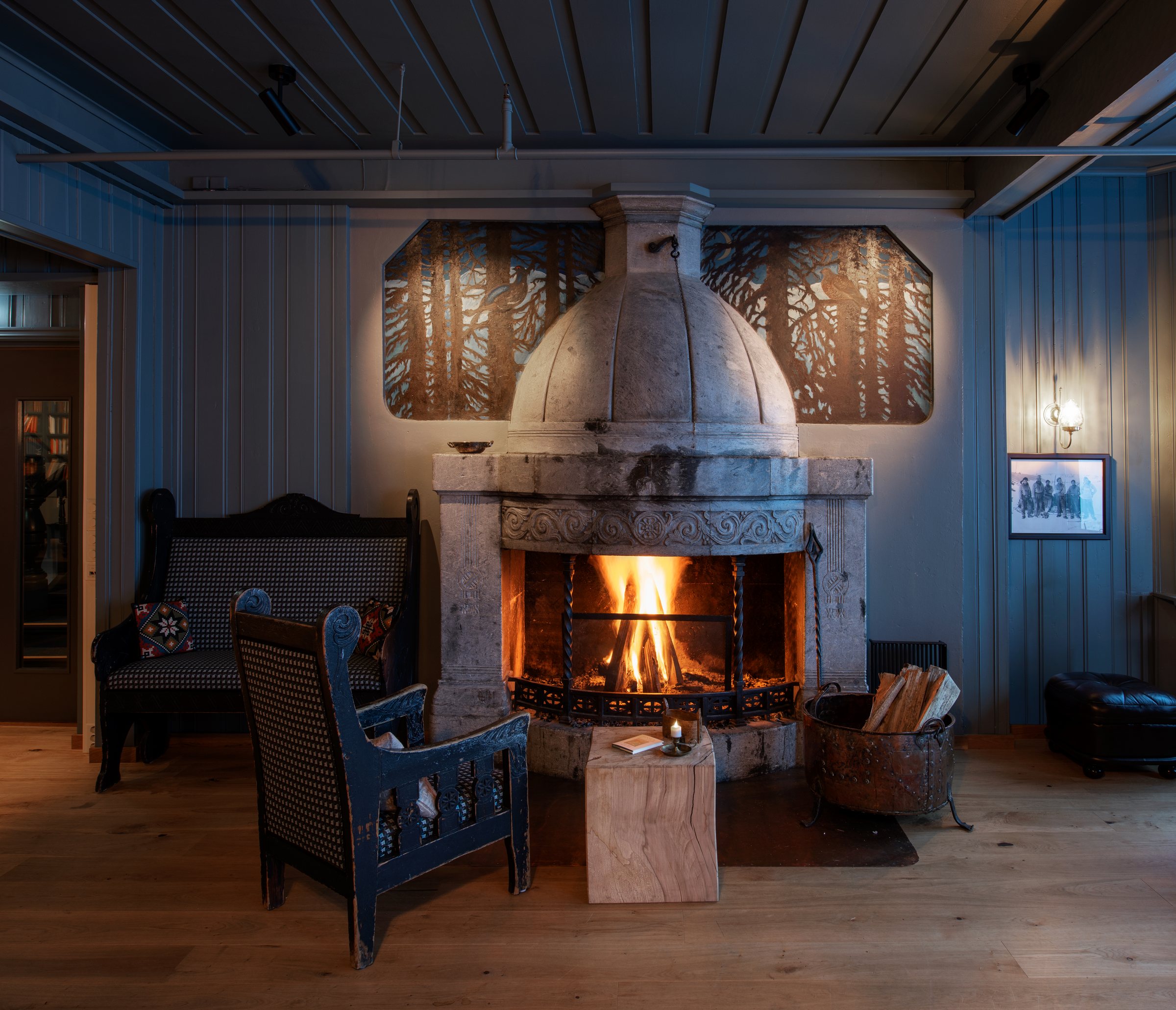
Fine dining in a historic setting
The dining room at Finse 1222 also retains many stories from earlier days, as well as a clear architectural and interior design identity that testifies to its historical function. Based on several quality historical photos, these original qualities were recreated. Highlights include wallpaper designed by William Morris, one of times’ greatest textile designers, and inspired by his fabric “Bird” which was discovered on old furniture in the attic. In addition, historically adequate lamps and maintaining the profiled roof and the curved corner transitions are other highlights from the renovation.

Elevated experience
All the hotel rooms have been upgraded with a new color and material palette. For visitors searching for an even more exclusive experience indoors, a small selection of suites was added by elevating the rooftop of the main building and making adjustments to the facade. Spectacular views from both the bed, bathtub, and reclining chairs offer generous opportunities to relax and take in the landscape and the varying weather outside. The technique to lift the roof is not a traditional one, but a tailor-made “fold” designed to ensure that the wind and snow don’t stack up on the roof as it previously did.
Inspired by the glacier Hardangerjøkulen itself, a hotel-specific blanket was also designed to match both the views and ambiance on site.

